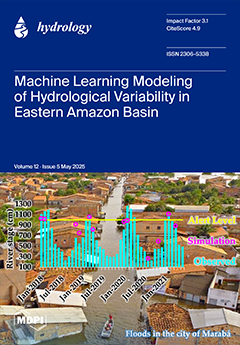Global water demand due to population growth and agricultural development has led to widespread overexploitation of groundwater, particularly in semi-arid regions. The traditional hydrochemistry monitoring system still suffers from limited laboratory accessibility and high costs. This study aims to predict the major ions of groundwater, including Ca
2+, Mg
2+, Na
+, SO
42−, Cl
−, K
+, HCO
3−, and NO
3−, utilizing two field-measurable parameters (i.e., total dissolved solids (TDS) and mineralization (MIN)) in the Aflou syncline region, Algeria. A multilayer perceptron (MLP) model optimized with Levenberg–Marquardt backpropagation (LMBP) provided the greatest predictive accuracy for the different ions of SO
42−, Mg
2+, Na
+, Ca
2+, and Cl
− with R
2 = (0.842, 0.980, 0.759, 0.945, 0.895), RMSE = (53.660, 12.840, 14.960, 36.460, 30.530) (mg/L), and NSE = (0.840, 0.978, 0.754, 0.941, 0.892) in the testing phase, respectively. However, the predictive accuracy for the remaining ions of K
+, HCO
3−, and NO
3− was supplied as R
2 = (0.045, 0.366, 0.004), RMSE = (6.480, 41.720, 40.460) (mg/L), and NSE = (0.003, 0.361, −0.933), respectively. The performance of our model (LMBP-MLP) was validated in adjacent and similar geological locations, including Aflou, Madna, and Ain Madhi. In addition, LMBP-MLP showed very promising results, with performance similar to that in the original research region.
Full article





